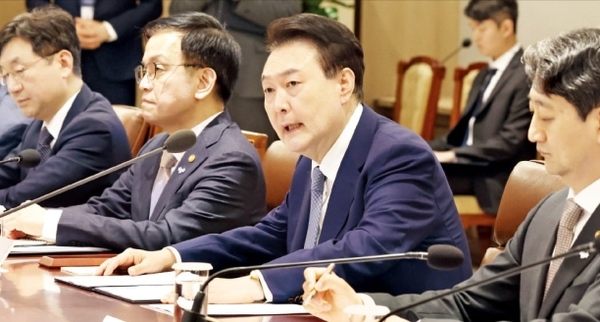
The South Korean government has unveiled a semiconductor support plan centered on expanding preferential interest rate loans to prepare for the Semiconductor National Competition. The total scale has increased to 26 trillion won, larger than initially expected. However, direct subsidies were excluded from the measures due to fiscal capacity constraints. Analysts are questioning whether South Korea can survive in a “cold” hegemonic war waged by the U.S., China, Japan, Taiwan, and Europe.
Choi Sang-mok, deputy prime minister and minister of economy and finance, announced a comprehensive support plan for the semiconductor ecosystem at the Seoul Government Complex on May 23. “I believe that our incentives are not lacking compared to any other country,” he said. This amount is more than the initially stated “10 trillion won plus alpha.”
The core of this plan is low-interest loans. The government plans to establish a 17 trillion won loan program by expanding capital through Korea Development Bank (KDB). The government is likely to contribute approximately 1.7 trillion won by mixing in-kind contributions such as public institution stocks with cash investments. Additionally, the semiconductor ecosystem fund, currently being formed at 300 billion won, will be expanded to 1.1 trillion won. Over 2.5 trillion won will be invested in infrastructure support, including roads, water supply, and power for the creation of semiconductor clusters.
This level of support is due to the elevated status of semiconductors in the AI era, now seen as the “cornerstone of national security” beyond just “the rice of industry.”
However, the subsidies most desired by the industry were omitted in this plan. Deputy Prime Minister Choi stated, “The large companies requested infrastructure support related to the Yongin cluster.” Yet, a high-ranking industry official noted, “The semiconductor war is a relative one with other countries, and this plan will not change the reality that Korea’s investment attraction competitiveness is declining.” This means that the incentive for global semiconductor companies to first consider establishing new factories in the U.S., Japan, or Europe, which are spending vast sums of money, remains unchanged.
Global semiconductor companies are estimated to have received US$380 billion in subsidies from governments worldwide. The U.S. alone has provided US$39 billion in subsidies to companies such as Micron Technology, Intel, Taiwan’s TSMC, and South Korea’s Samsung Electronics. Japan has given more than 10 trillion won in subsidies just to TSMC’s first and second factories in Japan.
Even Taiwan, which previously had no direct subsidies, has decided to provide subsidies in the process of attracting the R&D centers of Nvidia and AMD. China is pouring in more than US$50 billion in subsidies, chasing South Korea in strong areas like memory and semiconductor contract manufacturing.
Lee Jong-hwan, a professor of System Semiconductor Engineering at Sangmyung University, said, “The extent to which competing countries view semiconductors as important is much greater than expected. Low-interest loans are helpful, but they are somewhat lacking compared to other countries.”
The government plans to finalize the specific details of the semiconductor ecosystem support plan announced today by June. Additionally, it aims to develop a “growth strategy for system semiconductors,” a task for South Korean semiconductors, by August.
At the meeting, Ahn Duk-geun, minister of trade, industry, and energy, said, “Korea has strengths in the memory field, but it is weak in the system semiconductor field, which accounts for two-thirds of the global semiconductor market.” He added, “There are only about five companies in Korea with (sales) of around 100 billion won in the system semiconductor sector.” He continued, “We aim to grow these companies to about ten and increase the market share of the system semiconductor sector from the current 2% to 10% by 2030.”







